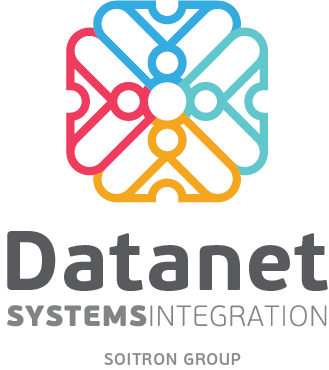As system architectures become increasingly complex and component numbers rise, IT teams encounter significant challenges in monitoring operational conditions and resolving issues. A 2023 IDC study revealed that 47% of participants utilize between 11 and 40 different monitoring tools. However, only 17% believe these tools help them achieve their objectives. For most, the sheer volume of alerts from various monitoring systems is overwhelming, leading to “alert fatigue” and the potential to overlook critical issues. Moreover, many crucial alerts are viewed in isolation, lacking the contextual information necessary for IT teams to prioritize problems based on risk and business impact.
The IDC study concludes that managing the vast volume of data to identify performance issues, coupled with a lack of visibility, can lead to serious consequences such as decreased application performance, increased downtime, user frustration, and financial losses for organizations. In this context, adopting modern observability tools is a critical priority.
![]()
Cisco transitions from monitoring to observability
To overcome these challenges, Cisco is shifting its focus to observability – the ability to assess the current state of an IT system based on the data it generates, allowing for the detection of deficiencies before they escalate into issues.
Traditional monitoring tools provide IT teams with visibility and alerts for deviations from normal conditions but fall short of explaining the root causes of problems. They also fail to show the propagation effects or how current issues might impact other applications and transactions. In the context of heterogeneous environments and cloud applications, observability becomes essential, bridging the gaps left by traditional monitoring.
Cisco Full Stack Observability (FSO) enables IT teams to correlate application performance across the entire technology stack, providing deep insights into how it impacts business operations. By integrating application performance data with business context, FSO helps eliminate silos and barriers between different departments within the organization. This allows IT teams to prioritize issues with the greatest impact on business and user experience, and to take action across the entire stack for performance, optimization, and security.
A key aspect of enhancing Cisco’s observability offering was the acquisition and integration of Splunk. Cisco excels in network and application observability, while Splunk brings advanced capabilities for log analysis and cloud observability. Thanks to this integration, IT departments using Splunk and Cisco benefit from unified visibility across an organization’s entire digital footprint. This unified approach correlates and integrates network, infrastructure, cloud, application, and security data, augmented by the power of Artificial Intelligence to automate tasks and analyze data.
Benefits of Observability
Cisco’s Full Stack Observability offering helps clients gain better control over distributed IT environments, make informed decisions about digital experiences, ensure performance aligns with end-user expectations, and reduce risks while securing workloads.
The benefits of Cisco’s Full Stack Observability include:
- End-to-End Visibility: Provides comprehensive visibility across the cloud environment, enabling organizations to quickly detect and trace critical issues. This reduces Mean Time to Identify (MTTI) and Mean Time to Resolve (MTTR), improving application availability and performance, and delivering a better end-user experience.
- Real-Time Monitoring: Supports rapid responses to changes in application behavior and resource usage, ensuring timely adjustments and optimizations.
- Centralized Perspective: Offers a unified view of the entire IT environment, allowing organizations to monitor issues and risks from a single location.
- Third-Party Service/Application Visibility: Enables monitoring and correlation of third-party services and applications alongside internal applications and services, providing a holistic view of the ecosystem.
- Application Monitoring: Covers both traditional and modern applications, correlating collected data with performance indicators reported by end users within the specific context of their activities.
- Cybersecurity Investment Prioritization: Helps prioritize cybersecurity investments based on associated risks, focusing efforts on high-impact vulnerabilities.
- Cost Management: Provides a comprehensive view of costs across the entire IT and cloud infrastructure, enabling optimal resource allocation and cost reduction.
Use cases
Cisco Full Stack Observability (FSO) provides real-time visibility, insights, and recommended actions enriched with business context, enabling teams across various domains to identify, prioritize, and proactively address issues to deliver always-available and secure digital experiences. Key use cases include:
- Monitoring and Optimization of Traditional and Hybrid Applications: Manage applications like SAP, addressing performance issues to enhance efficiency and effectiveness.
- Cloud-Native Application Monitoring: Proactively identify, correlate, and prioritize issues based on their business impact on applications running in the cloud.
- Customer Digital Experience Monitoring: Offer IT teams an actionable, end-to-end view of application usage, dependencies, and their impact on the business, ensuring a seamless customer experience.
- Application Dependency Monitoring: Provide complete visibility into networks, services, and external dependencies, including Internet and cloud provider networks, APIs, and third-party services. Integrate real-time application dependency mapping data with network intelligence.
- Cost Optimization: Achieve application-level visibility to understand active and inactive cloud service expenses, continuously optimizing resource allocation both on-premises and in the cloud.
- Security and Business Risk Correlation: Secure applications by providing real-time visibility into their health and prioritizing actions based on a risk score that links security issues to business context.
Cisco Observability with Datanet Systems’ support
Cisco Full Stack Observability is not a one-size-fits-all solution but an ecosystem of modules and applications designed to provide tailored observability capabilities for each organization. Depending on your specific use cases, Cisco offers various commercial packages that include the Cisco Observability platform, alongside components for monitoring cloud services, user experience, resource allocation, and application dependencies.
Datanet Systems experts are available to help you gain a deeper understanding of observability and how to effectively implement it within your organization. For further information, please reach out to us at sales@datanets.ro.
 Adaptive DDoS protection solutions for...
Adaptive DDoS protection solutions for...
